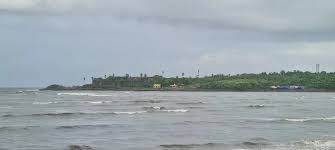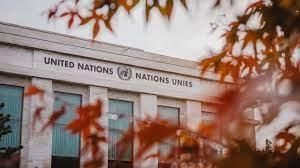UPSC Daily Current Affairs- 7th April 2023 | Current Affairs & Hindu Analysis: Daily, Weekly & Monthly PDF Download
GS-I
Madh Island

Why in News?
The western zone bench of the National Green Tribunal (NGT) recently revoked the stay on demolition of five studios in the Madh Island.
About Madh Island
- It is an island located in Malad west, in the western suburbs of Mumbai, Maharashtra.
- It consists of several fishing villages and farmlands bounded by Arabian sea to the west and Malad creek to the east.
- Over the years, Madh has evolved from a group of fishing villages to a prominent residential and holiday destination.
- It also houses Airforce and Naval stations.
- It is primarily inhabited by Kolis, Marathis, and Roman Catholics.
- It also has an old Fort, Madh Fort and a 16th century Portuguese Church – St. Bonaventure.
- ‘Erangal’ is a picturesque village on Madh island which is a popular filming location.
What is the National Green Tribunal (NGT)?
- It has been established under the National Green Tribunal Act 2010.
- Mandate: Effective and expeditious disposal of cases relating to environmental protection and conservation of forests and other natural resources.
- Composition: It comprises the Chairperson, the Judicial Members, and Expert Members.
- The Tribunal is not bound by the procedure laid down under the Code of Civil Procedure, 1908,but shall be guided by principles of natural justice.
- New Delhi is the Principal Place of Sitting of the Tribunal and Bhopal, Pune, Kolkata and Chennai shall be the other four places of sitting of the Tribunal.
Source: The Indian Express
Sikkim Nathu La Avalanche

Why in News?
Recently, a massive Avalanche hit Sikkim’s Nathu La.
What is Avalanche?
- An avalanche refers to a sudden and swift movement of snow, ice, and debris down a mountain or slope.
- Avalanche can be triggered by various factors like heavy snowfall, rapid temperature changes, or human activity.
- In avalanche-prone areas, specialized teams use techniques such as explosives, snow barriers, and other safety measures to monitor and control avalanche risks.
- The three main types of avalanches are rock avalanches (composed of shattered rock), ice avalanches (occurring in the vicinity of a glacier), and debris avalanches (consisting of unconsolidated materials such as loose stones and soil).
Causes of Avalanches
- Weather Conditions: Heavy snowfall, rapid temperature changes, strong winds, and rain are some of the factors that can contribute to avalanche conditions.
- Slope Conditions: The steepness, orientation, and shape of a slope can also increase the likelihood of an avalanche. Steep slopes with a convex shape are particularly prone to avalanches.
- Snowpack Conditions: The structure and stability of the snowpack play a significant role in avalanche conditions. Weak layers of snow or ice within the snowpack can cause it to collapse and trigger an avalanche.
- Human Activity: Recreational activities such as skiing, snowmobiling, and other movements on the slope can trigger avalanches.
- Natural Events: Natural disasters like earthquakes, volcanic eruptions, and rockfalls can also trigger avalanches.
Avalanches vs. Landslides: How They Differ
- Avalanches and landslides are both types of mass movements, but they occur in different environments and involve different materials.
- An avalanche is a sudden and rapid flow of snow, ice, and debris down a mountain or slope, while a landslide is a movement of rock, earth, or debris down a slope or cliff.
- Avalanches mainly occur in mountainous areas with heavy snowfall and steep slopes, whereas landslides can happen in a broad range of environments and can be triggered by factors like heavy rainfall, earthquakes, volcanic activity, or human activity.
- Both avalanches and landslides can be hazardous and potentially fatal, and taking appropriate precautions to avoid them is critical.
Source: Times of India
GS-II
Japan Circumventing Sanctions on Russian oil

Why in News?
Japan has been purchasing oil from Russia at a price above the $60 per barrel price cap imposed by the West, according to reports this week. This has led to speculation that Japan may be breaching an agreement reached last year to cap the price of Russian oil.
Why is there a price cap on Russian oil?
- The G-7 countries, the EU, and Australia imposed a price cap of $60 per barrel on oil purchased from Russia starting in December.
- The move was part of the economic sanctions imposed by the West to punish Russia for its invasion of Ukraine.
- The aim of the price cap is to restrict the amount of money that Russia can make by selling its oil, without severely affecting global oil supply.
- Russia contributes about 10% of global oil supply, so any significant reduction in its oil supplies could send oil prices soaring.
- The estimated cost for Russia to produce a barrel of oil ranges from $20-$45.
- The West believes that a $60 per barrel price cap will still allow Russia to keep its oil output steady.
Why is Japan breaking ranks with the West?
- Japan’s oil import from Russia in the first two months of 2023:
- Amounted to about 750,000 barrels
- Purchased at a price of about $70 per barrel
- Japan’s oil import from Russia is insignificant compared to Russia’s overall oil production of 10.7 million barrels per day in 2022
- Japan’s decision to purchase oil above the West’s price cap of $60 per barrel highlights the strong incentives for countries to subvert the cap
- Japan had previously won an exception to purchase Russian oil from Sakhalin-2 in Russia’s Far East to protect its energy security, even when the price cap was first imposed in December.
Will more countries follow Japan?
- Japan is not the only country that is undermining the West’s $60 price cap on Russian oil. Countries such as India, for instance, are believed to be paying more than $60 per barrel to purchase oil from Russia.
- As oil prices rise, the chances of a rift developing even among signatories to the oil price cap arrangement grow higher.
- When buyers are willing to pay more than $60 per barrel to secure supplies, oil traders will likely be happy to subvert sanctions and deliver supplies from Russia.
- Critics of the oil price cap had warned that implementing the price cap may be difficult because it works against strong economic incentives and because it may be impossible to keep track of all shipments in such a large, opaque oil market.
Will rising oil prices threaten the West’s price cap?
- OPEC and Russia decided to cut their oil output by 3.66 million barrels per day, sending oil prices soaring 6%.
- Russian urals, the flagship crude oil sold by Russia, also soared above $60 per barrel, thus breaching the West’s price cap.
- When the West first imposed its price cap, it had no effect on Russia’s oil output or revenues as Russian urals were trading well below $60 per barrel.
- But now with urals trading above $60 per barrel, things might turn out to be different.
- The West would hope that its price cap would keep Russia’s oil revenues in check despite rising oil prices.
- Russia, which has seen its oil revenues drop due to subdued oil prices and the West’s ban on Russian oil, will be hoping to turn the corner by bypassing Western sanctions and selling oil above the price cap.
- This will test the West’s ability to effectively implement its price cap.
Source: The Hindu
United Nations Statistical Commission

Why in News?
Recently, India has been elected to the highest statistical body of the United Nations for a four-year term beginning January 1, 2024.
About United Nations Statistical Commission
- It was established in 1947(HQ: New York) and is the highest body of the global statistical system.
- It brings together the Chief Statisticians from member states from around the world.
- Functions:
- It is the highest decision-making body for international statistical activities, responsible for setting statistical standards and the development of concepts and methods, including their implementation at the national and international levels.
- The Statistical Commission oversees the work of the United Nations Statistics Division (UNSD), and it is a Functional Commission of the UN Economic and Social Council.
- Membership: The Commission consists of 24 member countries of the United Nations elected by the United Nations Economic and Social Council based on an equitable geographical distribution according to the following pattern:
- Five members from African States
- Four members from Asia-Pacific States
- Four members from Eastern European States
- Four members from Latin American and Caribbean States
- Seven members from Western European and other States
- The term of office of members is four years.
- India was a member of the Statistical Commission last in 2004 and the country is returning to the UN agency after a gap of two decades.
Source: India elected to UN Statistical Commission
International Court of Justice and Climate Change

Why in News?
- The United Nations General Assembly (UNGA) has asked the International Court of Justice (ICJ) by passing a Resolution to give its opinion on countries’ obligations towards Climate Change based on the U.N. Framework Convention for Climate Change (UNFCCC).
- The resolution was pushed through by one of the smallest countries in the world, the Pacific Island of Vanuatu, an island that was devastated in 2015 by the effects of Cyclone Pam, believed to have been spurred by climate change, that wiped out 95% of its crops and affected two-thirds of its population.
What does the Resolution Seek?
- The UNGA asked the ICJ to answer two questions,
- What are the obligations of states under international law to ensure the protection of the climate system for present and future generations?
- What are the legal consequences under these obligations for states where they, by their acts and omissions, have caused significant harm to the climate system, particularly for Small Island Developing States (SIDS) and for people who are harmed.
- The resolution refers to international agreements like the Paris Agreement and the United Nations Convention on the Law of the Sea (UNCLOS).
- The ICJ will take around 18 months to give its opinion.
What is India’s Position?
- India has not taken a clear stance on the UN resolution, but it generally supports climate justice and accountability for Global Warming.
- The Indian government has referred the resolution to legal authorities to assess its implications and international ramifications.
- India has updated its NDC (Nationally Determined Contributions) commitments and plans to source half its electricity from renewable sources by 2030, but it did not co-sponsor the draft resolution.
- India is closely watching how major powers like the U.S. and China respond to the resolution, as their support is crucial for its implementation.
- India has emphasized that the ICJ process can only address climate change issues broadly and cannot name or profile any one country, also stressing that any attempt to impose an opinion in a "top-down" manner would be resisted.
Is the Advisory Opinion of the ICJ Binding?
- The advisory opinion of the ICJ would not be legally binding as a judgment, but it would carry legal weight and moral authority.
- It could provide important clarification on international environmental laws and streamline the process for issues related to climate finance, climate justice, and the loss and damages fund at the COP process.
- Past advisory opinions given by the ICJ, such as those on the Palestinian issue and the dispute between the U.K. and Mauritius over the Chagos Islands, have been respected.
Source: TH
What is the Neyveli Lignite Corporation India Limited (NLCIL)?

Why in News?
NLC India Limited (NLCIL) has generated 3,008 crore units of power in the financial year 2022-23, which is the highest for any financial year since its inception.
About Neyveli Lignite Corporation India Limited (NLCIL)
- What is it? It is a Central Public Sector Enterprise with Navratna status under the administrative control of the Ministry of Coal.
- It was incorporated in the year 1956 under the Companies Act, 1956.
- It is involved in the fossil fuel mining sector in India and thermal power generation.
- It currently operates four lignite mines, one coal mine, and six thermal power plants, as well as solar and wind power plants.
- Headquarters: Neyveli, Tamil Nadu
Source: NLCIL sets new records in power generation and coal production
GS-III
Stand-Up India Scheme

Why in News?
Recently, the Prime Minister of India has acknowledged the role that the Stand-Up India initiative has played in empowering the SC/ ST communities and ensuring women empowerment.
What are the Key Details of the Stand-Up India Scheme?
- About:
- Stand up India Scheme was launched by Ministry of Finance on 5th April 2016 to promote entrepreneurship at grassroot level focusing on economic empowerment and job creation.
- This scheme has been extended up to the year 2025.
- Purpose:
- Promote entrepreneurship amongst women, Scheduled Caste (SC) and Scheduled Tribe (ST) category.
- Provide loans for greenfield enterprises in manufacturing, services or the trading sector and activities allied to agriculture.
- Facilitate bank loans between Rs.10 lakh and Rs.100 lakh to at least one SC/ST borrower and at least one-woman borrower per bank branch of Scheduled Commercial Banks.
- Facilitates Bank Loans:
- The scheme aims to encourage all bank branches in extending loans. The desiring applicants can apply under the scheme:
- Directly at the branch or,
- Through Stand-Up India Portal (www.standupmitra.in) or,
- Through the Lead District Manager (LDM).
- The scheme aims to encourage all bank branches in extending loans. The desiring applicants can apply under the scheme:
- Eligibility for a Loan:
- SC/ST and/or women entrepreneurs, above 18 years of age.
- Loans under the scheme are available for only green field projects. Green field signifies, in this context, the first-time venture of the beneficiary in manufacturing, services or the trading sector and activities allied to agriculture.
- In case of non-individual enterprises, 51% of the shareholding and controlling stake should be held by either SC/ST and/or Women Entrepreneur.
- Borrowers should not be in default to any bank/financial institution.
- The Scheme envisages ‘up to 15%’ margin money which can be provided in convergence with eligible Central/State schemes.
- In any case, the borrower shall be required to bring in a minimum of 10 % of the project cost as own contribution.
- Achievements:
- Rs.40,710 crore has been sanctioned under Stand-Up India Scheme to 180,636 accounts in the last 7 years.
- More than 80% of loans given under this scheme have been provided to women.
- Rs.40,710 crore has been sanctioned under Stand-Up India Scheme to 180,636 accounts in the last 7 years.
Source: PIB
|
38 videos|5283 docs|1116 tests
|
FAQs on UPSC Daily Current Affairs- 7th April 2023 - Current Affairs & Hindu Analysis: Daily, Weekly & Monthly
| 1. What is the eligibility criteria for UPSC exams? |  |
| 2. How many attempts are allowed for UPSC exams? |  |
| 3. What is the syllabus for the GS-I paper in UPSC exams? |  |
| 4. How can I prepare for the GS-II paper in UPSC exams? |  |
| 5. What is the weightage of the GS-III paper in UPSC exams? |  |
















